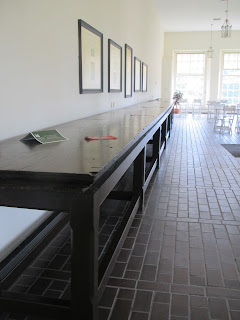As a child I would catch a steam train with my mother from Pontypool Road Station to Hereford to visit my grandmother.
I remember my trepidation as the platform disappeared around us in a cloud of steam and the strange hiss from the engine grew louder and louder. The train approached and passed us, gradually coming to a halt with the carriages alongside the platform for us to board. Inside the carriages were furnished with polished wood and pictures of exotic holiday resorts framed in glass cases. When all passengers were aboard and the doors closed, the Station Master waved his flag and blew his whistle to advise the train driver it was safe to depart.
Later diesel trains took over and the regular rhythm of the steam train and its rather frightening arrival disappeared.
My memories come flooding back at Pontypool & Blaenavon Steam Railway. Passing through their newly built ticket office and tea room, you can buy a traditional ticket at a traditional ticket kiosk.
The Station Master waves his flag and blows his whistle and we're off. On board a ticket collector checks and punches our tickets.
The journey on this especially constructed track, lasts minutes, but takes me back more than fifty years. The Railway Society has special days which can be discovered along with their next event on the link below.
www.pontypool-and-blaenavon.co.uk/
I remember my trepidation as the platform disappeared around us in a cloud of steam and the strange hiss from the engine grew louder and louder. The train approached and passed us, gradually coming to a halt with the carriages alongside the platform for us to board. Inside the carriages were furnished with polished wood and pictures of exotic holiday resorts framed in glass cases. When all passengers were aboard and the doors closed, the Station Master waved his flag and blew his whistle to advise the train driver it was safe to depart.
Later diesel trains took over and the regular rhythm of the steam train and its rather frightening arrival disappeared.
 |
| View across Garn Lakes from carriage |
The Station Master waves his flag and blows his whistle and we're off. On board a ticket collector checks and punches our tickets.
The journey on this especially constructed track, lasts minutes, but takes me back more than fifty years. The Railway Society has special days which can be discovered along with their next event on the link below.
www.pontypool-and-blaenavon.co.uk/
 |
| Level crossing with Ticket Office in the distance |

























